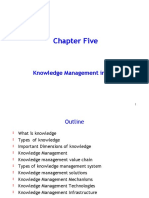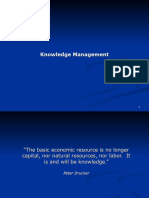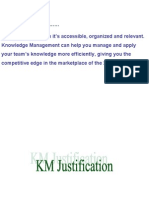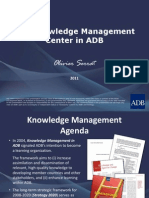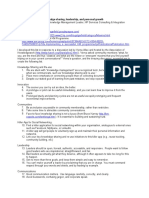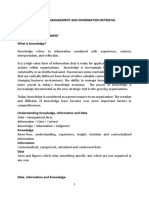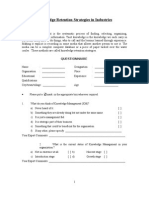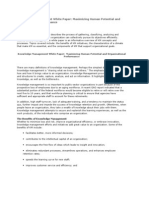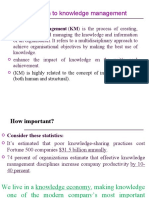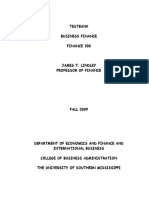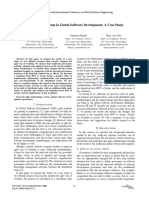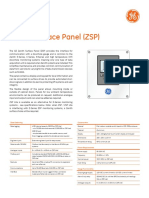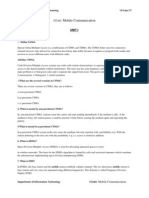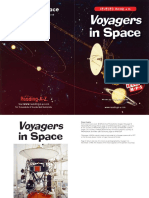0% found this document useful (0 votes)
252 views35 pagesLecture 7 Knowledge Management
This document discusses knowledge management and knowledge management systems. It defines knowledge and its different types, and outlines the knowledge management value chain. It then describes different types of knowledge management systems including enterprise-wide systems, knowledge work systems, and intelligent techniques. Enterprise-wide systems include content management systems, knowledge network systems, and portals/collaboration technologies.
Uploaded by
Amit JhaCopyright
© © All Rights Reserved
We take content rights seriously. If you suspect this is your content, claim it here.
Available Formats
Download as PDF, TXT or read online on Scribd
0% found this document useful (0 votes)
252 views35 pagesLecture 7 Knowledge Management
This document discusses knowledge management and knowledge management systems. It defines knowledge and its different types, and outlines the knowledge management value chain. It then describes different types of knowledge management systems including enterprise-wide systems, knowledge work systems, and intelligent techniques. Enterprise-wide systems include content management systems, knowledge network systems, and portals/collaboration technologies.
Uploaded by
Amit JhaCopyright
© © All Rights Reserved
We take content rights seriously. If you suspect this is your content, claim it here.
Available Formats
Download as PDF, TXT or read online on Scribd
/ 35
